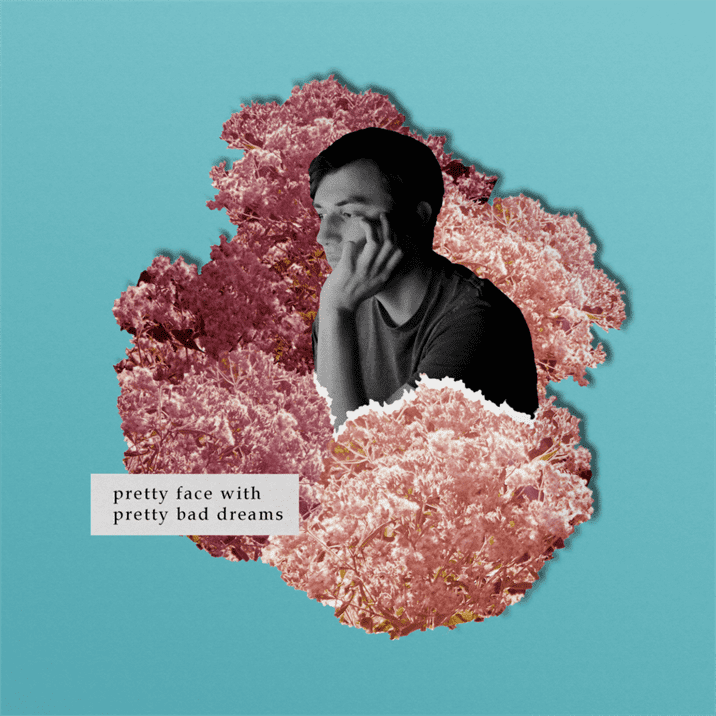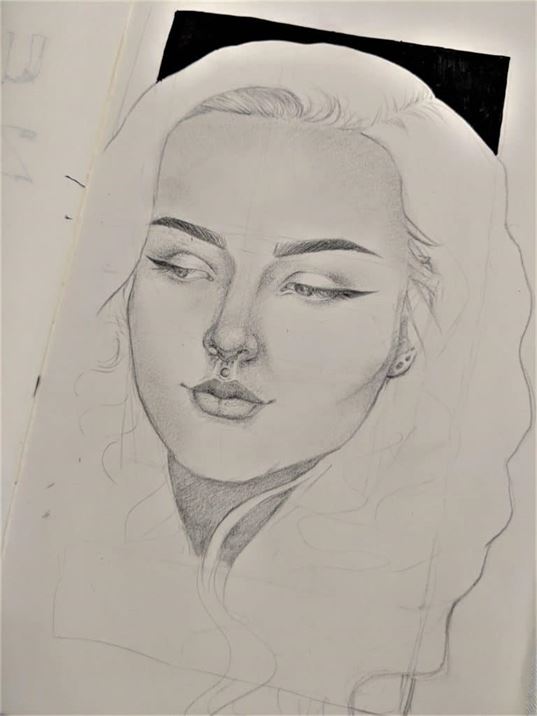Kelly Heil is a senior graphic design major with a minor in business at Montclair State University. Heil’s talents are interdisciplinary, spanning a variety of mediums and skill sets. Her experience ranges from photography and illustration to portraiture and creating her own fonts.
Heil is passionate about artistic expression and developing as a graphic designer. She is rarely seen without a notebook in hand, sometimes practicing calligraphy or doodling ideas for her next project. She spoke with The Montclarion staff writer Alexa Spear about her process and intentions as an artist in detail, crediting Montclair State’s design department for much of her growth.
Q: In your opinion, what does it mean to be a graphic designer?
A: I feel like it’s difficult to really pinpoint what being a graphic designer means. I used to think it was mostly designing book covers or logos, but there’s much more to it. It’s heavily research-based and requires an understanding of what your work is trying to convey. Some days you have to stay in the library for hours to do research before you can really get into the design aspect of it.
Graphic design is no longer just print media; it’s now geared toward websites and motion graphics. Being a graphic designer can be intimidating if you’re just starting out. You have to put in a lot of work if you want to see great results.

Utilizing digital editing techniques, this collage of images features fellow Montclair State student Kevin Weinpel. Photo courtesy of Kelly Heil
Q: Can you describe your personal creative process?
A: Ever since I can remember, my creative process has been my mind floating away somewhere while my hands do the rest. Drawing helps to put my thoughts in order. I resort to drawing when I really want to figure something out. Most of the time my creative process involves me secluding myself and being left alone with my thoughts.
Q: What aspect of being an artist do you find the most challenging?
A: I think the hardest thing about creating art is expression and maintaining that mindset. I think a lot of people can relate to hitting this “creative wall.” I took a class freshman year with professor Josh Jordan that really helped me understand what art is. I wish I could retake that class now. Creating art isn’t about “thinking outside the box,” it’s ripping apart that dumb box you’ve found yourself in and making something out of it.

A movie poster Heil created for “Earth 2.0,” written and directed by Montclair State alumnus Richard Ormsby. Photo courtesy of Kelly Heil
Q: What experiences at Montclair State have had an impact on your creativity?
A: My favorite class so far has been marketing. It’s what helped me decide to go into business as a minor and has really improved my design by understanding what the consumer is looking for. I’ve actually had a lot of professors that I would say have shaped me into who I am today.
I love all of the professors in the design department because each one brings something different to the table. However, a professor that has really affected me is Dr. Winfield Parsons. Every class he would share his knowledge about life and was always so encouraging. He taught me that there really isn’t a limit as to what you can do, as long as you give it a shot and give it your all.
Q: What determines if your designs are successful?
A: For me, my designs are successful if they fulfill the elements of form and function. I want my designs to express whatever it is I’m designing for and if I can really capture the essence of it.

Heil developed the concept and design for her “Clint Eastwood” font. Photo courtesy of Kelly Heil
Q: What would you consider to be the most exciting project you’ve worked on?
A: My favorite project has been when I designed a font called “Clint Eastwood,” and I had to make a video for it to show off the font. I made a minute-long lyrical video featuring actor Clint Eastwood with Glass Animals’ “Season 2 Episode 3.” Feel free to check it out on my Instagram (@klheil). It was my first time using Adobe AfterEffects, so I must have spent 20 hours on the video.
Q: Where do you see yourself after graduation?
A: Ideally, I would like to either work in publication or product design, specifically for cosmetic companies. I’m really into the whole cosmetics community and would love to work in it.

This graphite drawing is an example of what might be found between the pages of Heil’s notebooks. Photo courtesy of Kelly Heil.
Q: What do you hope to achieve through graphic design?
A: I just hope it can get people to take art more seriously. In my group of friends that aren’t in the arts, I don’t think they see it as I do. I want to be able to show them, or anyone else for that matter, that design is important and is implemented in our everyday life.



